Award-winning garden designer Andy Sturgeon shares his tips for creating a Mediterranean garden
Andy Sturgeon's tips for creating a Mediterranean garden are simple and suitable for gardens of all sizes
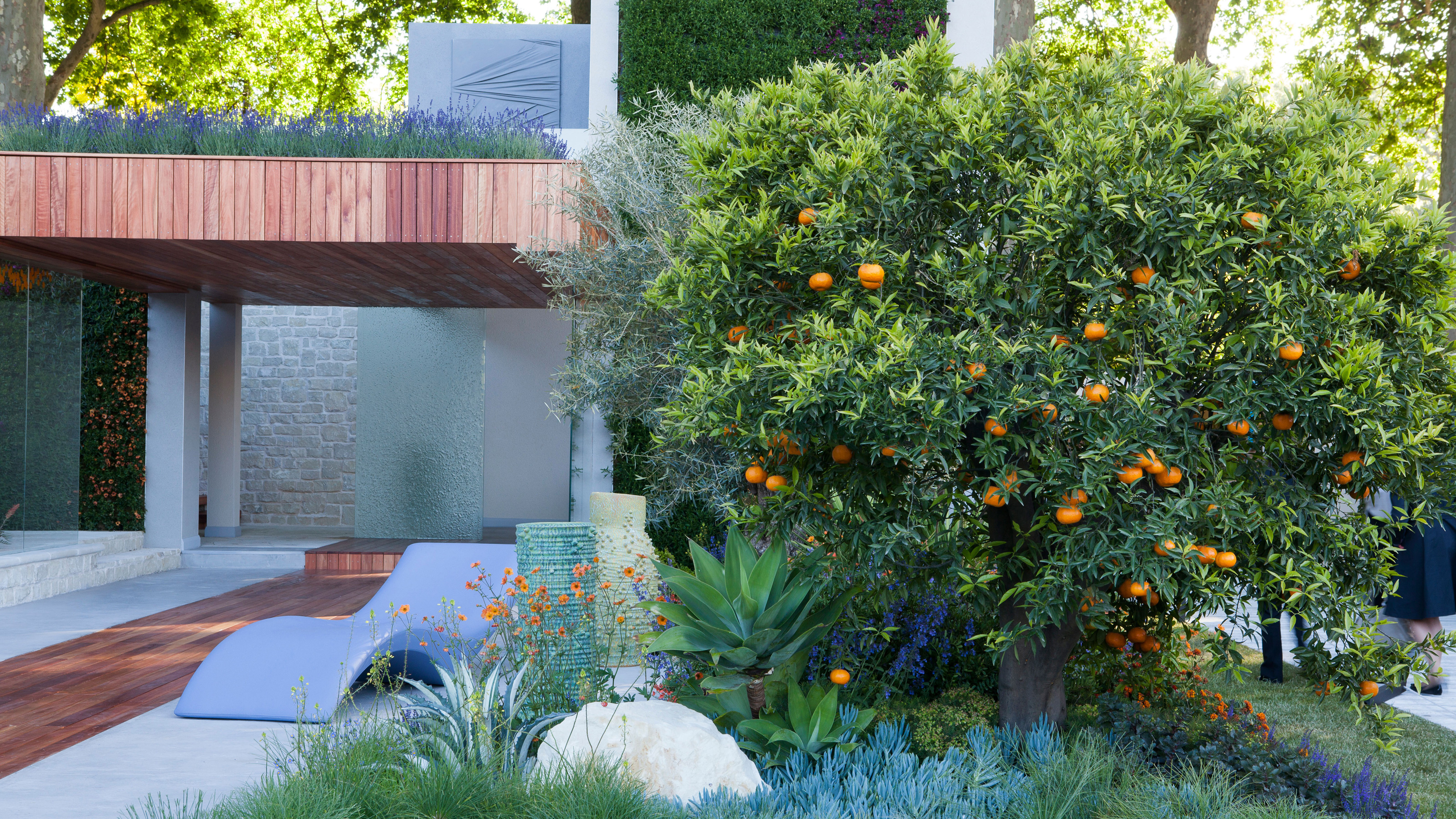
Andy Sturgeon's tips for Mediterranean gardens will convince you that it's not at all difficult to bring a bit of Mediterranean warmth and glamour to any garden. Whether yours is big or small, and whether you live in a hot place or somewhere with colder winters, you can still achieve the coveted look.
Andy's Mediterranean garden ideas come from many years of experience in garden design. Andy Sturgeon has been designing award-winning gardens since 1988, and he frequently incorporates elements of Mediterranean style into his creations. Here are his top tips for creating a Mediterranean vibe at home.
1. Planting is key
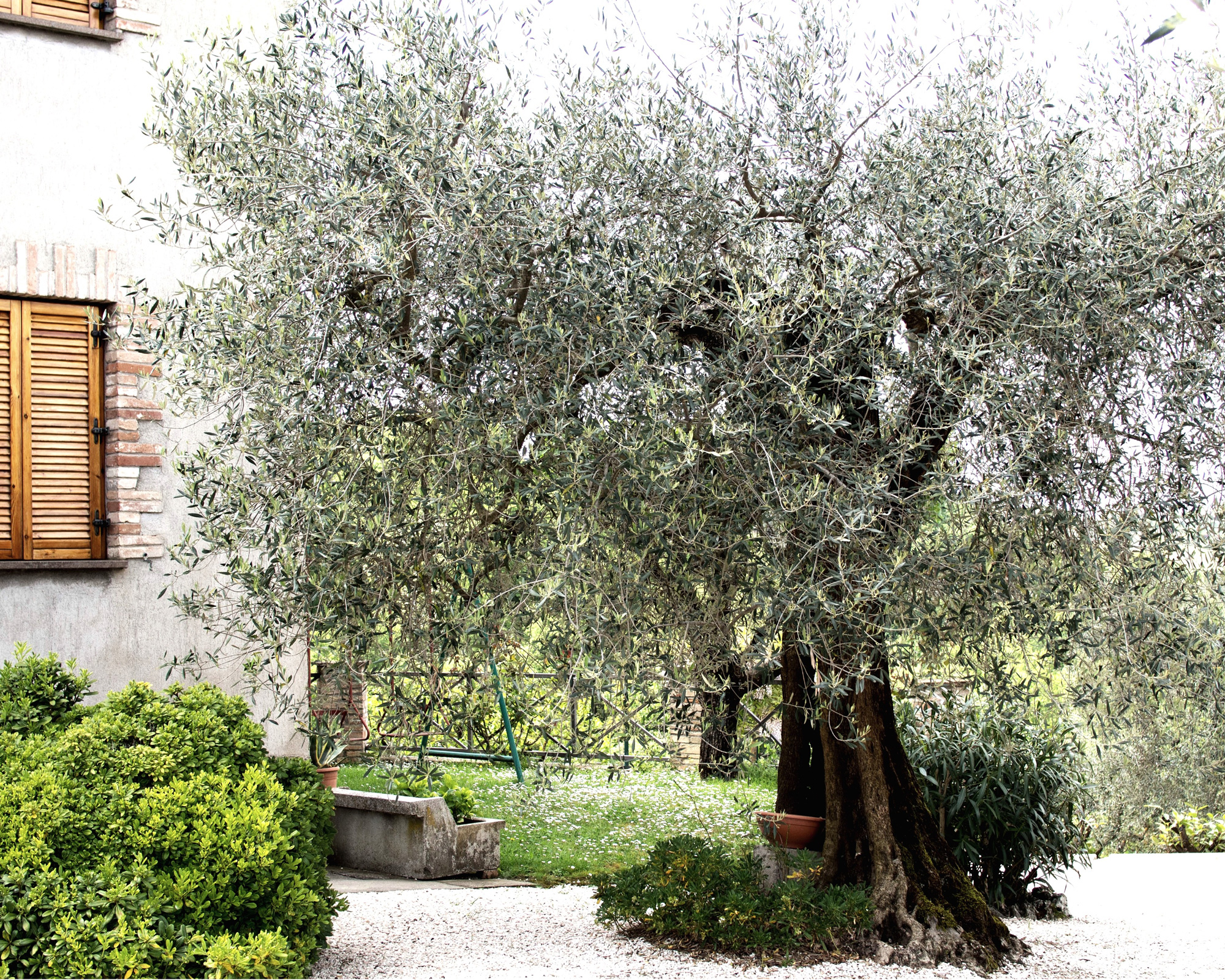
As Andy explains, you don't need an elaborate planting scheme to introduce a Mediterranean feel to your garden: 'a single olive or palm tree will immediately introduce an exotic flavour,' he says. Of course, there are many ways to create an even more authentic feel. For example, 'you can take things a step further by focusing on plants with silver and grey foliage and thick waxy leaves. These plants have all evolved to deal with dry climates and so the way they look makes us think of holidays.'
And if you want to know how to create a herb garden, you can combine that project with adding a Mediterranean look. 'Herbs like rosemary and thyme are ideal alongside the sword-shaped leaves of Phormiums and Astelias. Geraniums tumbling over the edges of pots are instantly reminiscent of Italy or Spain and lavender will also bring some color.'
If you don't have much space, you can grow most of these as part of your container gardening ideas, Andy says: 'Helpfully, these plants will all grow well in pots and not require too much watering.' You could even just go for 'a small tree or a large shrub as a sculptural centerpiece. A tree doesn’t need to take up any space at ground level and you will find that it instantly makes the space more intimate and atmospheric. Ideal candidates are multistem Osmanthus aquifolium or Pittosporum tenuifolium. One advantage of a small garden is that it will tend to trap the scent from flowers and aromatic foliage and you will appreciate it more.'
2. Natural patio paving is essential
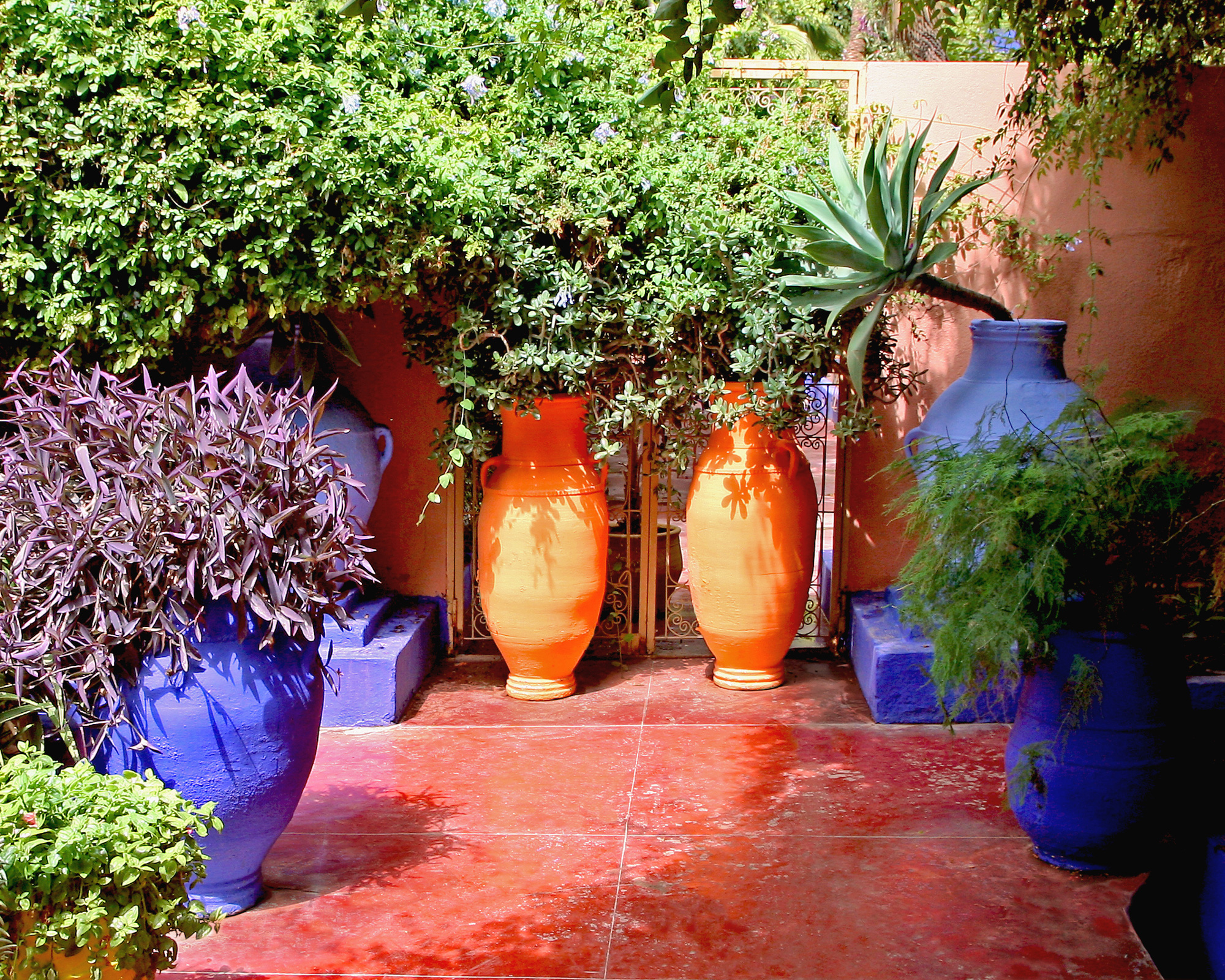
Nothing quite announces the Mediterranean garden look as instantly as natural paving. It's not just about the look, however. Andy points that 'a natural stone or terracotta tile will absorb the heat of the day and radiate the heat back out in the evening. It also feels good underfoot when walking barefoot.' Quick-drying, tactile pavers that retain heat should be the focus of your patio paving ideas.
3. Opt for larger statement accessories over many small ones
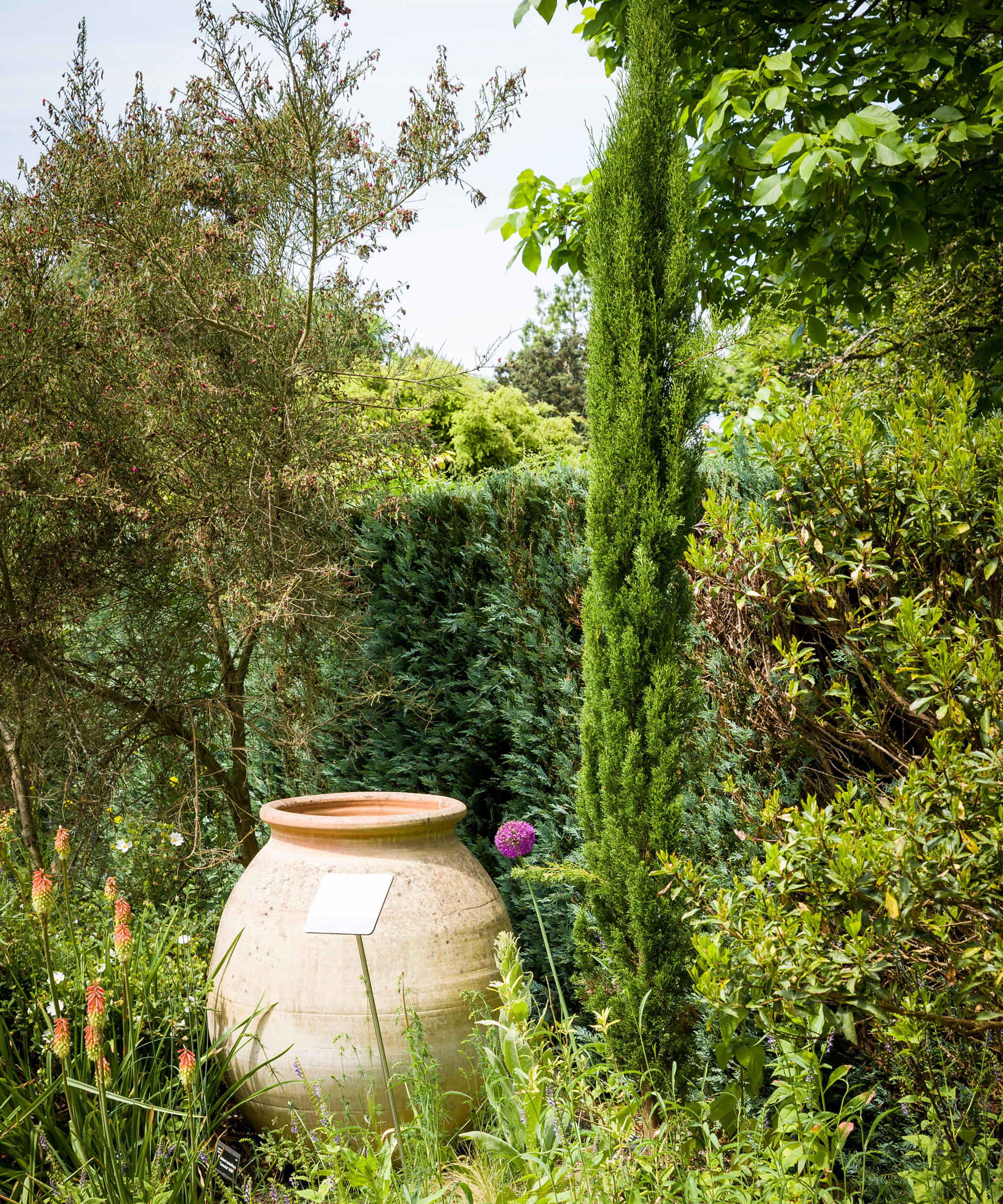
Whether your garden is huge, or you are looking for small garden ideas, Andy recommends going for a few large, standout pieces: 'The importance of dressing and accessorising a garden should not be underestimated. Choose pots carefully and remember that too many small pots in a small space will make it feel cluttered. Instead go for fewer, larger statement pieces, even in a small courtyard garden.' Even a single, well-chosen terracotta pot with a lemon tree will instantly conjure up the right atmosphere.
4. Create shade
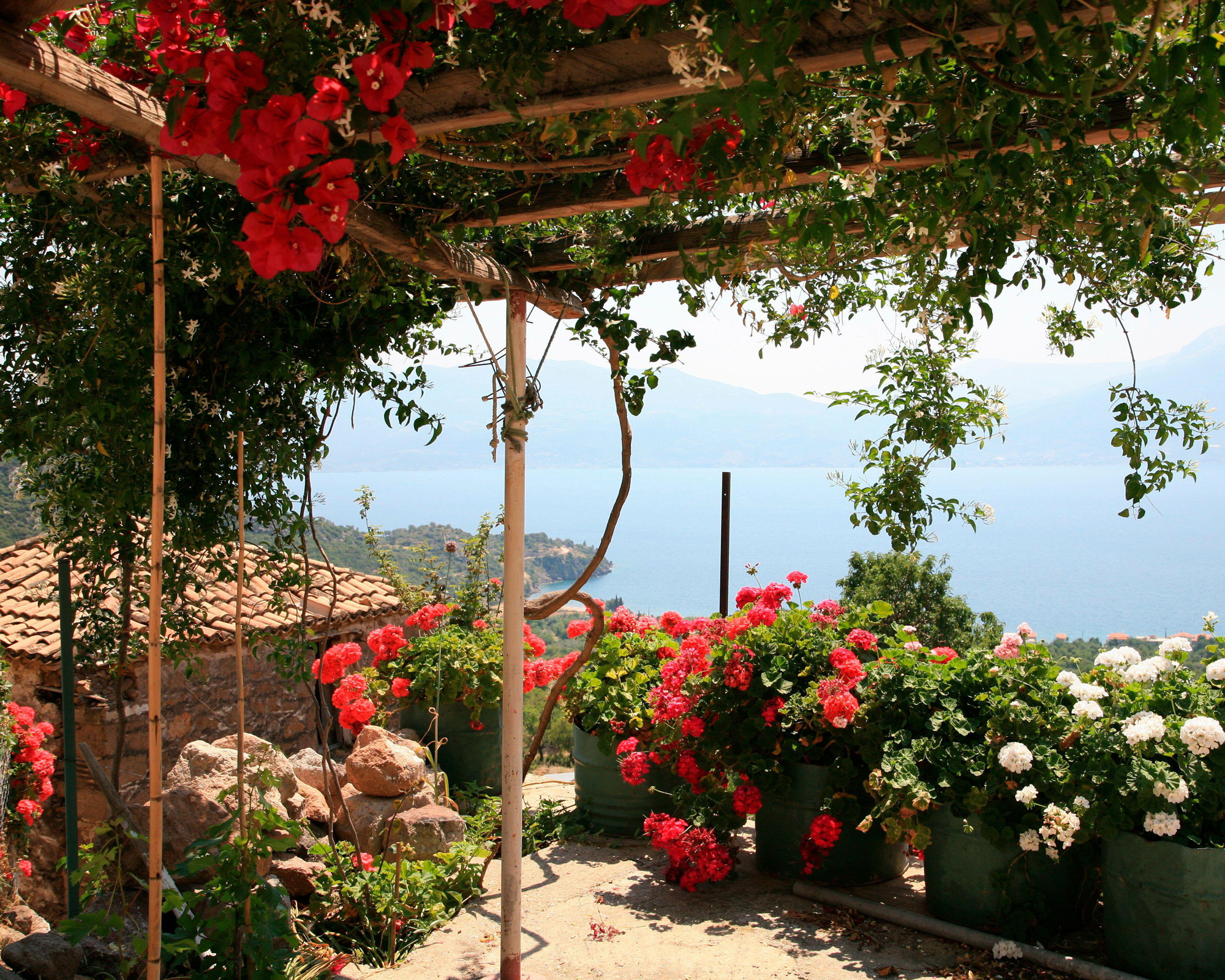
The idea of a Mediterranean garden is to enjoy the warmer days without overheating. According to Andy, 'the easiest solution is garden parasols, and some even come with integrated lights and heating. For a more permanent structure, you could build a timber pergola and then adorn it with grapevines or the scented star jasmine Trachelospermum.'
It can be easy to get carried away with shading measures during the summer – keep winter in mind, too. Andy especially cautions against overly bulky pergolas in small gardens. 'In winter, a pergola too close to the house can block daylight and make your rooms darker.'
5. Pay attention to walls and fences
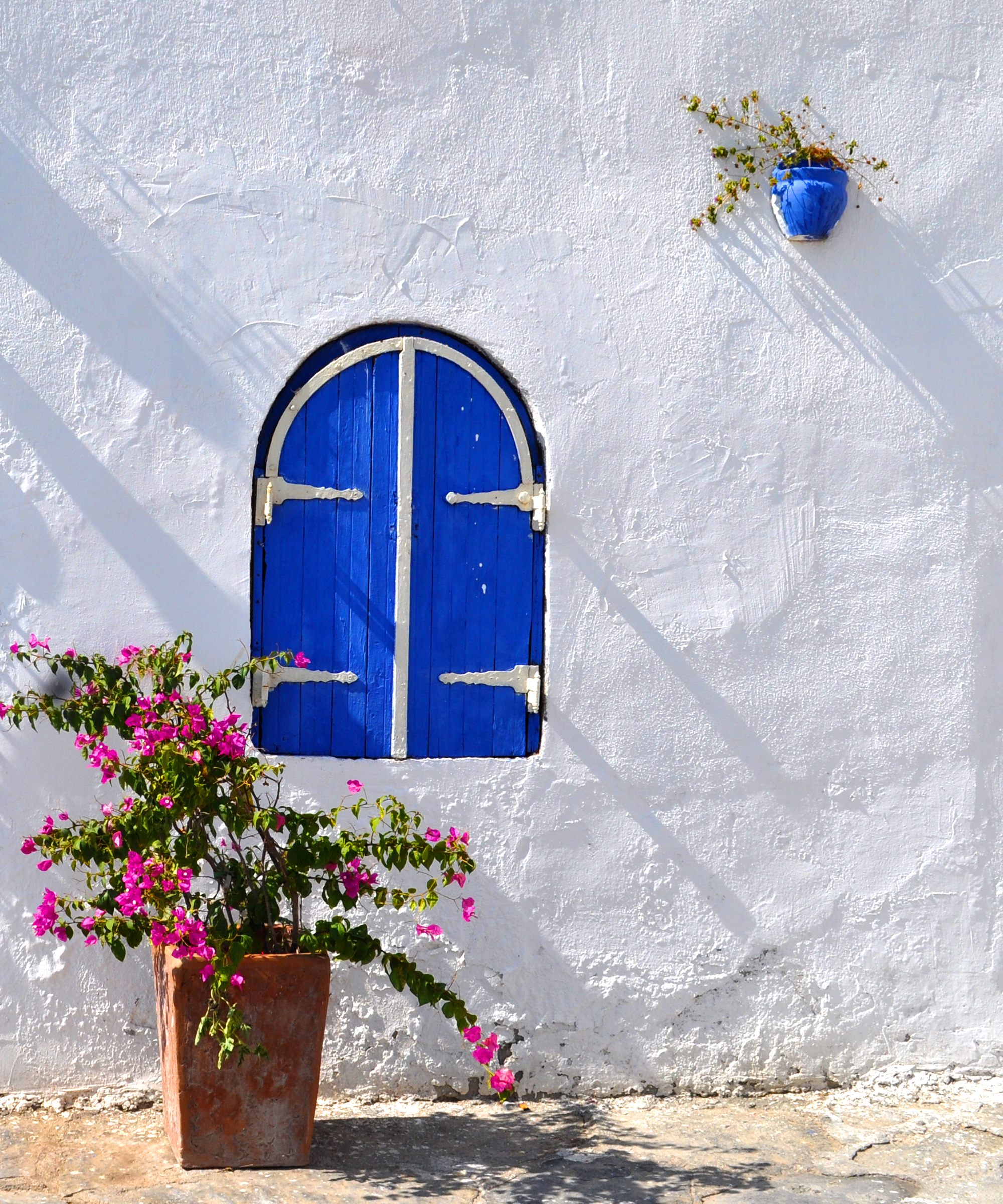
Andy's take on walls and fences is that they 'can be the most prominent feature of a garden but also potentially costly. Fences are best covered in climbing plants but don’t be afraid to paint walls to make them part of your scheme.' Andy especially recommends painting a wall in small gardens. 'Putting a light color onto the wall will bounce the light around and make the space feel much lighter and brighter,' he says.
If in doubt, always go for white garden wall ideas, while bearing in mind the inevitable maintenance that comes with it: 'White is the classic Mediterranean color but you have to be prepared to repaint it every year. Pale earthy colors are much more forgiving.'
Anna writes about interior design and gardening. Her work has appeared in Homes & Gardens, Livingetc, and many other publications. She is an experienced outdoor and indoor gardener and has a passion for growing roses and Japanese maples in her outside space.
